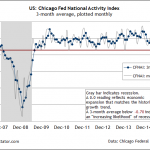Anyone who has ever tried to value a company has used some rules of thumb when conducting the financial ratio analysis. For me personally, these form a base upon which various screens and shortlists are structured. Looking for undervalued stocks can at times feel link looking for a needle in a haystack, and these rules of thumb can come in very handy ease the screening process and get to the shortlist faster, so we can quickly commence the joyous process of reading the appropriate financial statements and conducting a deeper due diligence on each stock.
So what kind of financial ratio analysis we are talking about? Which rules of thumb?
Let’s start with some key valuation ratios.
Insisting on a Low P/E Ratio may Cause You to Miss Greatly Undervalued Stocks:
Price/Earnings ratio is one of the cornerstone ratios upon which many a screen is built. A typical value investor is very likely to add a P/E ratio filter in his or her screen. The rule of thumb that is used in this case is to keep your P/E ratio under 15. Some aggressive value investors (or more conservative, depending on your point of view) might filter out any stocks with P/E ratio above 10.
The Problem
There are cases where a company may see a temporary drop in earnings. This may be due to short term difficulty, an unusual non-cash charge to the earnings, or for any multiple reasons. For example, an insurance company may face a large claims payout in a given year due to a vicious hurricane. This event is statistically not likely to be repeated every year and the company otherwise is healthy. This year’s earnings though are abnormally low, and hence the P/E ratio is likely to be very large (Most sophisticated investors realize the short term nature of this event and are unlikely to punish the stock price too much knowing that the earnings will recover quickly).
Is this stock likely to be undervalued? Chances are, it is. Temporary distress creates opportunities.












Leave A Comment